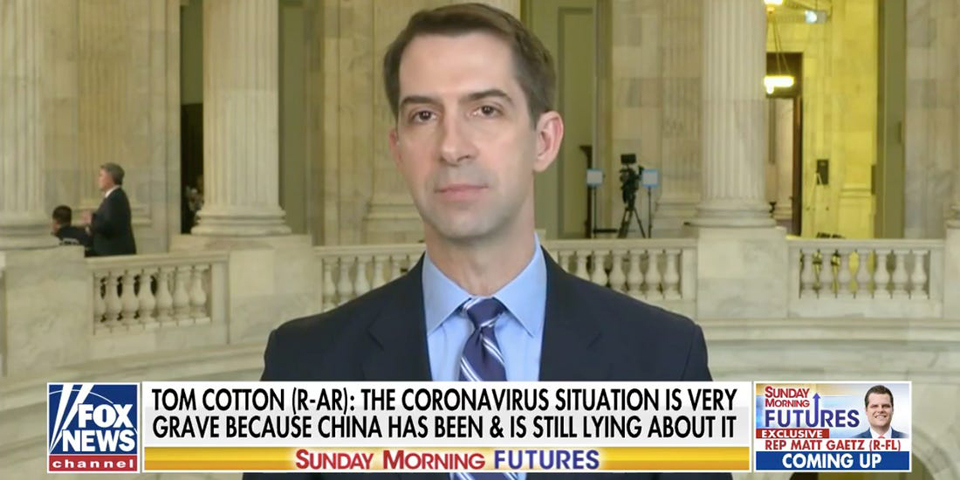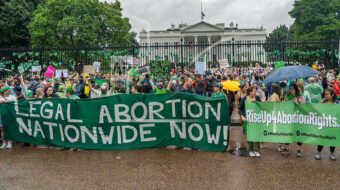
You’ve probably heard the rumor: The new coronavirus is a bioweapon. Some malicious country—perhaps the United States, maybe China, depending on who’s talking or tweeting—purposefully unleashed the virus that causes COVID-19 on the world. You might have also heard that the idea was widely dismissed by disease and defense experts. A good bioweapon, some note, wouldn’t spread as easily and indiscriminately as the new coronavirus does. But for political opportunists and conspiracy theorists, the rising number of COVID-19 infections, the growing ranks of the dead, and the mass disruptions to the daily rhythms of life have created fertile conspiratorial ground.
The COVID-19 bioweapon conspiracy theory has not only failed to be debunked; it even seems to be getting a second wind, and prominent politicians from countries around the world are embracing it. “For a while, it seemed the pushback on the bioweapons narrative from the Washington Post and Foreign Policy was effective,” biodefense researcher Filippa Lentzos said. “But in recent days, the narrative seems to be coming back with a vengeance.” Current and former government officials, including former Iranian president Mahmoud Ahmadinejad, Chinese Foreign Ministry spokesman Lijian Zhao, and U.S. Sen. Tom Cotton of Arkansas have given credence to some version of the theory in the last month.
In the United States, Cotton isn’t fully letting up on his suggestion last month that the virus was a Chinese military creation. In a Fox News interview in February, he appeared to suggest just that, before walking back the idea, sort of. (In a series of tweets, he said the bioweapon theory was just one of several hypotheses.) Bioweapon or not, Cotton still believes someone is responsible for the pandemic, someone Chinese. In a statement Thursday announcing that he’d be temporarily closing his Senate office, he called the virus the “Wuhan coronavirus” five times, vowing, “We will hold accountable those who inflicted it on the world.” In a later clarifying tweet, he said that, yes, he meant China.
A March 12 article in Britain’s Express tabloid added fuel to fire, reporting that University of Illinois law professor Francis Boyle, who helped draft the legislation that implemented the Biological Weapons Convention in the United States, had identified a “smoking gun” that showed the coronavirus was a bioweapon leaked from a Chinese research lab near Wuhan, the city where the outbreak originated. Boyle reportedly based his theory on a paper on ScienceDirect that noted a “gain-of-function” in the virus that makes it better than other coronaviruses at spreading among humans. But as the Express itself notes in a correction, the research paper Boyle cited does not speculate on what caused the gain-of-function in the virus. “It was therefore incorrect when our article claimed ‘the paper suggested COVID-19 has been tampered with,’” the correction notes.
That didn’t stop Manish Tewari, a prominent Indian parliamentarian and spokesperson for the Indian National Congress, the country’s leading opposition party, from re-tweeting the Express article to his more than 380,000 followers, adding his own highly charged twist: the disease outbreak is a terrorist act.
“CoronaVirus is a bioweapon that went [rogue] or that was made to go [rogue]. It is an act of terror,” Tewari tweeted on March 12. “International investigation conducted either under auspices of ICJ or ICC is necessary to unearth the truth & bring focus back on eradicating Biological Weapons.”
Lentzos worries that the parade of prominent figures promoting the bioweapons conspiracy theory could weaken the global taboo against possessing bioweapons—making biological weapon research appear to be widespread. “It’s being pushed at senior political levels, most prominently from Iran, but also from Russia and to some extents China,” she said. “It’s important we call this out. We can’t afford to have it seem like states have bioweapons and are getting away with it, or even that states would want to pursue these sorts of weapons. It significantly degrades the taboo against biological weapons.”
In early March, Iran had over 3,500 confirmed cases spanning all 31 of its provinces, and Iranian officials began jumping on the bioweapons conspiracy bandwagon. Hossein Salami, the commander of Iran’s Revolutionary Guard said that the COVID-19 outbreak was “perhaps a bioterror attack” carried out by the United States. The following day, a conservative Iranian lawmaker repeated the claim, telling an Iranian state-run news outlet that the virus had been intentionally spread throughout Iran and China and proposing an independent bioterror defense organization.
Mahmoud Ahmadinejad, the former Iranian president who seems unable to resist a good opportunity to propagate falsehoods (even Al-Qaida once asked him to stop making things up), also got in on the coronavirus conspiracy action. In an open letter to the UN secretary-general, he wrote that it was clear that the virus was “produced in laboratories … by the warfare stock houses of biologic war belonging to world hegemonic powers.”
Naturally, it didn’t take long for these conspiracies to percolate to the top. On March 12, Iran’s supreme leader issued an edict endorsing the idea that “this incident might be a biological attack” and creating a “health and treatment headquarters” within the armed forces to help control the spread of the virus.
The Chinese government, meanwhile, the bogymen in Cotton’s telling, has at least one prominent conspiracy-monger in its ranks. On March 12, Zhao, China’s foreign ministry spokesperson, demanded answers from the U.S. government by tweeting, “It might be U.S. army who brought the epidemic to Wuhan.”
The new coronavirus is thought to have jumped from animals to people, but researchers still haven’t pinned down which species to blame. The pangolin, an ant-eating animal prized for its meat and scales in China, is one candidate, according to an article in Nature. But scientists haven’t found a close-enough genetic match between viruses found in pangolins and those found in humans to reach a definitive conclusion
And so the source of COVID-19 remains ambiguous, and, like a certain U.S. senator from Arkansas, conspiracy theories thrive on ambiguity.
“We ought to be transparent with the American people about all this,” Cotton said last month to defend his controversial musings. “Maybe some of these so-called experts think they know better. I don’t. And they really don’t either.”
This article was originally published by the Bulletin of the Atomic Scientists. It is reprinted here with permission.













Comments